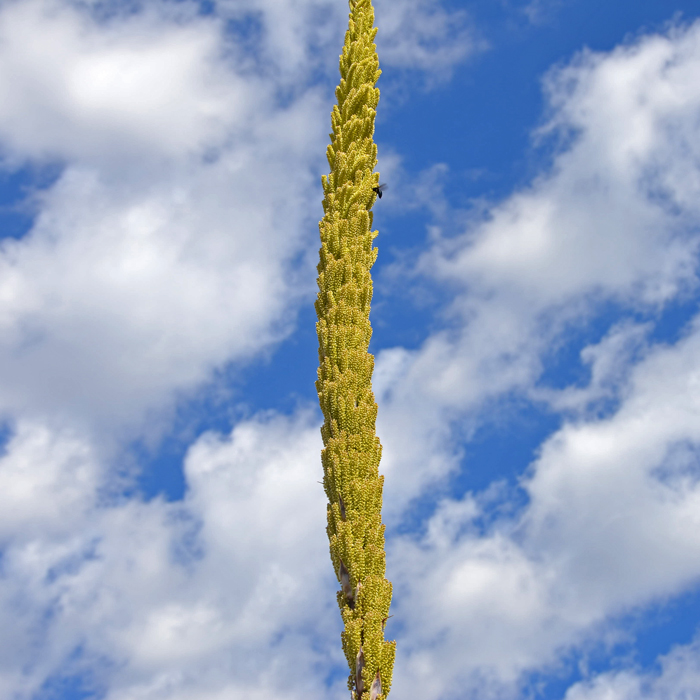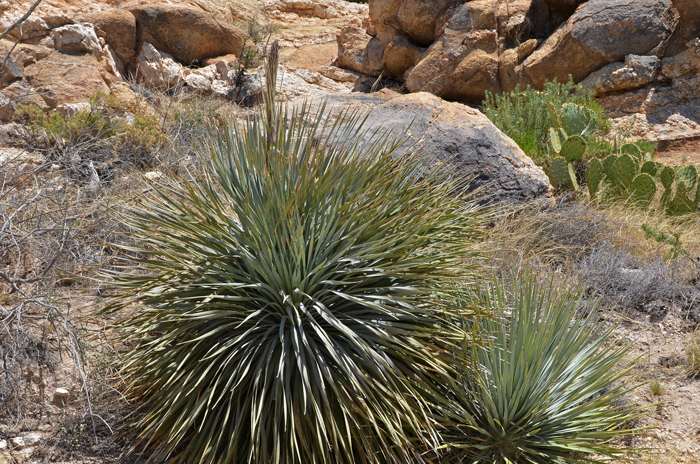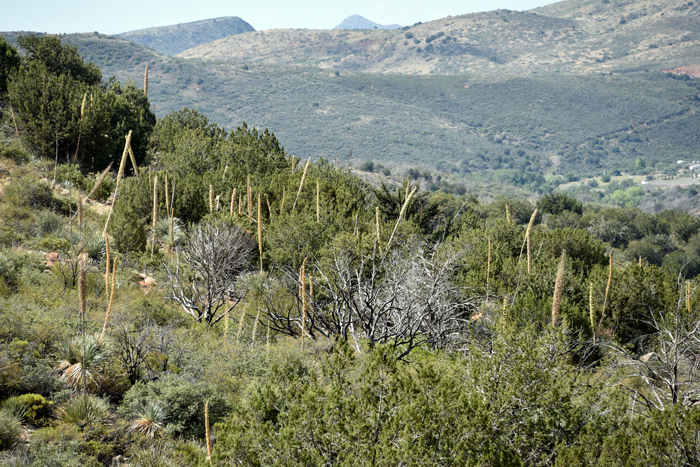Dasylirion wheeleri, Sotol




Scientific Name: Dasylirion wheeleri
Common Name: Sotol
Also Called: Common Sotol, Desert Spoon; (Spanish: Sotol, Cucharilla, Palmilla de Serrucho, Sawo, Saño)
Family: Agavaceae, Agave or Century Plant Family (Reclassified to Asparagaceae)
Synonyms: (Dasylirion wheeleri var. wheeleri)
Status: Native
Duration: Perennial
Size: Inflorescence Up to 20 feet tall or less.
Growth Form: Shrub, subshrub; plants in large rosettes, thick and woody, mostly subterranean caudex
Leaves: Green, whitish or bluish green; in large clusters, up to 2 feet long, rigid, margins fully armed with sharp, curved spines
Flower Color: Greenish, tepals sometimes tinged purple; male and female flowers on separate plants (monecious); large terminal panicles; fruit is a 3-wing capsule.
Flowering Season: May to August.
Elevation: 4,000 to 6,000 feet.
Habitat Preferences: Open areas, rocky slopes.
Recorded Range: Dasylirion wheeleri is relatively rare in the United States although common where found in Arizona, New Mexico and far western Texas. Sotol is also native to northwest Mexico (Chihuahua, Sonora).
North America & US County Distribution Map for Dasylirion wheeleri.
U.S. Weed Information: No information available.
Invasive/Noxious Weed Information: No information available.
Wetland Indicator: No information available.
Threatened/Endangered Information: In North America Dasylirion wheeleri is listed as "Salvage Restricted" by the state of Arizona.
Genus Information: In North America there are 4 species and 4 accepted taxa overall for Dasylirion. World wide, The Plant List includes 22 accepted species names and includes a further 9 infraspecific rank for the genus.
In the Southwestern United States: Arizona has 1 species of Dasylirion, California, Nevada and Utah have 0 species, New Mexico has 2 species, Texas has 4 species. All data is approximate and subject to taxonomic changes.
Comments: Dasylirion wheeleri is a native plant in the southwest and is often used in desert and upland landscapes. Plants are readily available from local nurseries.
This plant has been and is an important resource for southwestern American indigenous peoples. Similar to the hearts of Agave, hearts of Dasylirion have been prepared and used as both food and an alcoholic beverage known as Sotol.
Type species from southern Arizona (Rochrock 329, 655).
Dasylirion wheeleri has been used for food, beverages, tools and materials by southwestern American indigenous peoples.
Apache, Chiricahua & Mescalero Food, Beverage; Crowns pit-baked, removed, peeled, crushed, mixed with water, fermented and used as a beverage.
Apache, Chiricahua & Mescalero Food, Bread & Cake; Crowns baked in pits, stripped, pounded to a pulp, spread out to dry and eaten like cake.
Apache, Chiricahua & Mescalero Food, Vegetable; Stalks boiled, dried and stored to be used as vegetables.
Apache, Mescalero Other, Smoking Tools; Stalks and leaf base tissues used to make cigarette papers.
Papago Fiber, Basketry; Leaves used as foundation in coiled basketry.
Papago Fiber, Mats, Rugs & Bedding; Used to make large, tough sleeping mats, cradle mats and back mats for the carrying frame.
Papago Food, Vegetable; Flower stalks roasted in ashes and eaten as greens.
Southwest Indians Food, Bread & Cake; Crowns pit-baked, dried, pounded into flour and made into cakes.
See ethno-botanical uses at Native American Ethnobotany, University of Michigan, Dearborn.

